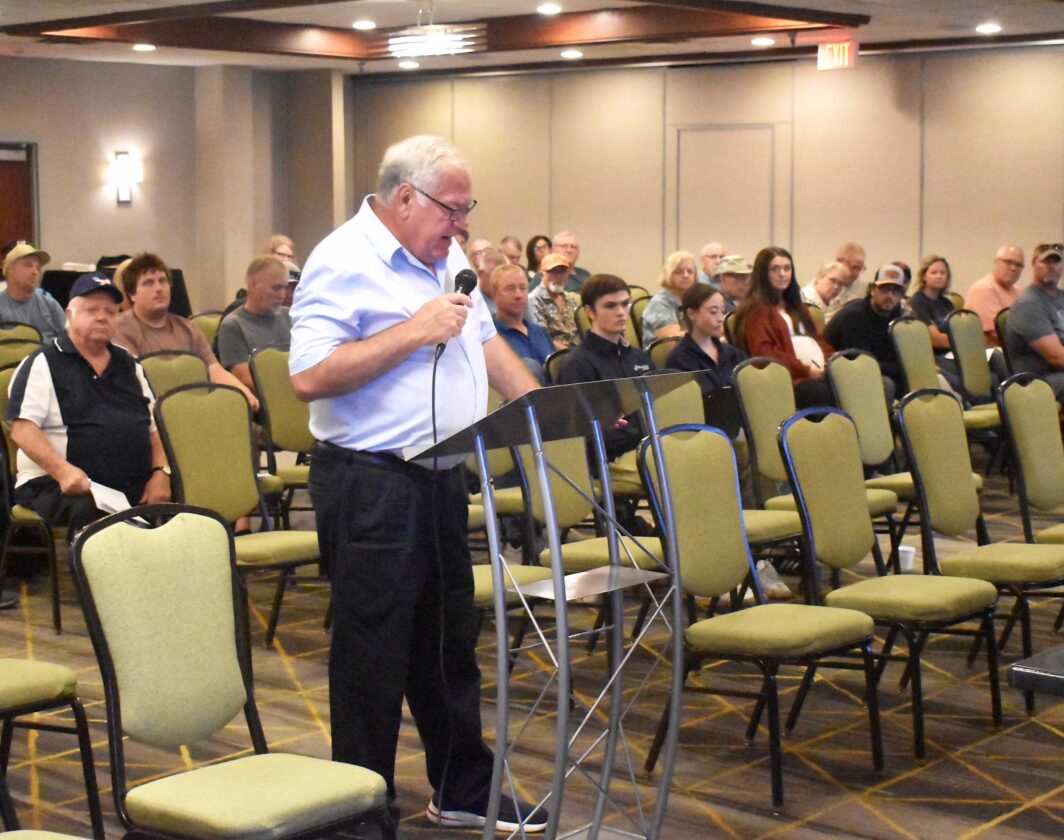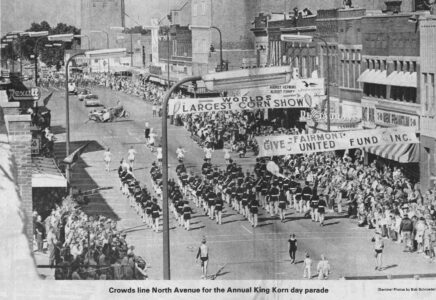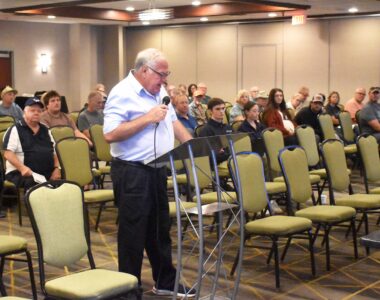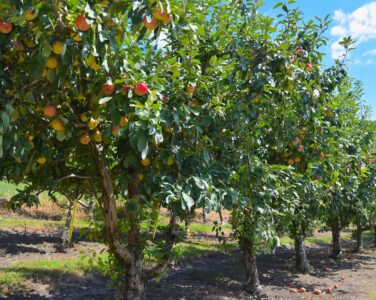Solar farm plan draws concerns

ABOVE: Brad Wallace shares his concerns with the project while dozens of onlookers, some not pictured, listen and look on at the Best Western on Thursday.
FAIRMONT – An informational meeting on a potential solar farm in Rutland Township drew concerns from citizens on Thursday.
The meeting, held at Best Western, was the first step for the Minnesota Public Utilities Commission (MPUC) and Geronimo Power, the company looking to build the farm and adjacent battery power storage area. Geronimo Power submitted their application in June, and with this meeting, the MPUC was looking for feedback on potential environmental concerns.
The farm would impact 1,277 acres of land, of which 1,004 acres would be used for project operations. The power made from the solar farm would go to where it’s most needed under the current power regulations. An existing substation will be used as the point of interconnection, with only one new 365-foot-long transmission line necessary.
Geronimo Power Representative Marta Lasch said the company did its due diligence in studying environmental protection and safety prior to submitting its site permit application.
“We’ve conducted wetland delineations, cultural resource surveys, habitat assessments, and threatened and endangered species reviews,” she said. “We’ve also crafted an agricultural impact mitigation plan, which we’ve had reviewed by the Department of Agriculture.”
The farm would be built on current agricultural farmland, purchased from the current landowners. A stormwater basin would also be created, and vegetation would be established to keep the land underneath the solar farm suitable for agriculture when the solar farm is no longer there. The current plan is for the solar farm to be there for 25 years.
Several community members voiced their concerns, including those who live near the proposed site of the solar farm. Deb Wallace asked what would happen to the farmland east of her property, and if there is potential for a micro-climate to impact the area because of the solar panels and drainage tile.
MPUC Energy Infrastructure Permitting Team Member Jessica Livingston said a lot of solar projects are made on farmland, so special attention is paid to that land.
“We make sure that the project can be put back into farmland once the permit is done,” she said. “The intention is to plant beneficial vegetation that can retain the soil health. We look at what the soil will be given, what the plants are for, what’s going to be planted in there, and make sure that it’ll be able to be put back to farmland. If the project gets decommissioned, everything can be hopefully operating better than it had before.”
Lifelong Rutland resident Catherine Sovell-Bartz said she was concerned about the toxic and heavy metals that go into solar panels and what could happen if there’s damage.
“There is lead, cadmium, arsenic, selenium, silver, copper, aluminum and nickel,” she said. “This is a large creation that equals about 900 football fields worth. I have concerns that if there is a large hail storm, it wouldn’t even have to be that large, the whole acreage could be wiped out and broken, and all of these toxins and heavy metals can be leaching into the groundwater and into the lakes and into our systems.”
Geronimo Power Senior Development Karsen Rumpf said the chemicals that are used are treated in a safe and effective manner.
“It’s built in a way where it’s an inert material,” he said. “It’s covered in a specific substance that is not flammable, and it creates an inert material. These panels break like a windshield would break. They just break like glass. It’s not a leakage, it’s not a fluid. As far as toxins being released into the air, those specific materials are encapsulated, so no toxic chemicals are sent into the air.”
Rutland resident Jennifer Moeller said the project line, which is 125 feet from her property line, is far too close. She said she gets migraines due to bright lights, and thus, she is concerned about glare and how that could negatively impact her health.
Livingston said all human and animal health concerns are being taken into consideration, and glare should not be a factor.
“We wouldn’t want anybody to be impacted by glare related to the solar panels,” she said. “Usually, because they’re absorbing the solar, it’s not going to be reflected back out. If anything, it might reduce glare from snow. But we’ll be looking at that as well.”
There will be a second, online-only meeting on Sept. 2 from 6 to 9 p.m. To join, visit minnesota.webex.com, use the webinar number 2494 406 6452 (this is also the number to use as an ‘access code’ if prompted), and use the webinar password MNPUC. The meeting can also be joined by phone toll-free at 1-855-282-6330, with the webinar password being 66782.
Comments on environmental concerns for the project will be taken until 4:30 p.m. on Sept. 17. They can be submitted online at mn.gov/puc/get-involved/public-comments, via email to jessica.livingston@state.mn.us, and by physical mail to Jessica Livingston, Minnesota Public Utilities Commission, 121 7th Place East, Suite 350, St. Paul, MN 55101.
A second meeting will be held in February 2026 once all comments and environmental factors are considered and a full plan is developed.




